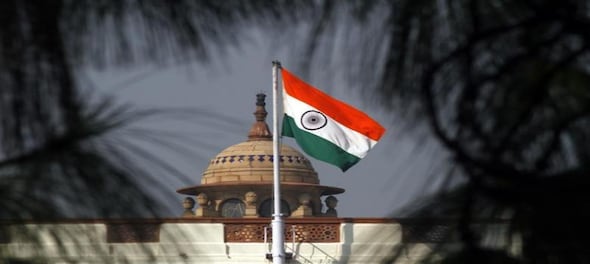
Every year, India celebrates the National Flag Day on July 22 as it was on this day that the tricolour was adopted in its present form in 1947 as India’s national flag.
When the members of the Indian Constituent Assembly met in the Constitution Hall in Delhi on July 22, 1947, the first thing they discussed was reportedly a motion by Jawaharlal Nehru to adopt the national flag for free India.
At the meeting, it was proposed that the Indian national flag be a “horizontal tricolour of deep saffron (kesari), white and dark green in equal proportion.” The white band would have a navy blue wheel (charkha).
The finer nuances were subsequently discussed at the meeting and the Indian national flag was hoisted by the first PM of India Jawaharlal Nehru on August 16, 1947, at the Red Fort.
As per the government, the prescribed ratio of the width of the flag to its length should be two to three. The diameter of the wheel should be approximate to the width of the white band and it should have 24 spokes.
History of the flag
Sister Nivedita, the Irish disciple of Swami Vivekananda, is said to have designed an Indian flag in 1904, which is deemed to be the first national flag of India. This flag had two colours yellow and red and contained the symbol of vajra (thunderbolt) and a white lotus in the centre. The words ‘Vande Mataram,’ was written in Bengali on it.
Another flag was designed in 1906 using three colours — blue, yellow and red, which had two symbols, the sun and the star. This flag also had ‘Vande Mataram’ written on it.
The same year, another version of the same flag was seen in orange, yellow and green. This flag came to be known as the ‘Lotus flag’ or ‘Calcutta flag.’
In 1907, Madame Cama and her group of exiled revolutionaries hoisted the Indian flag in Germany. Dr Annie Besant and Lokmanya Tilak adopted another flag in 1917 as part of the Home Rule Movement.
The design of the Indian national flag is largely attributed to the Indian freedom fighter Pingali Venkayya. Venkayya is said to have first met Mahatma Gandhi in South Africa during the second Anglo-Boer War (1899-1902). He was then part of the British Indian Army.
Venkayya researched about the design of the flag for many years and even published a book with possible designs in 1916.
When he met Gandhi at the All India Congress Committee in Bezwada in 1921, Venkayya proposed a basic design of the flag. Several changes were made to the design till 1931, when the Congress Committee adopted the tricolour as India’s national flag in Karachi.
What does the flag signify?
The saffron colour in the flag stands for strength and courage, while the white with the Dharma Chakra implies peace and truth. The green symbolises fertility, growth and auspiciousness.
On January 26, 2002, the government modified the Indian flag code, allowing citizens of India to hoist it over their homes, offices and factories on any day.



